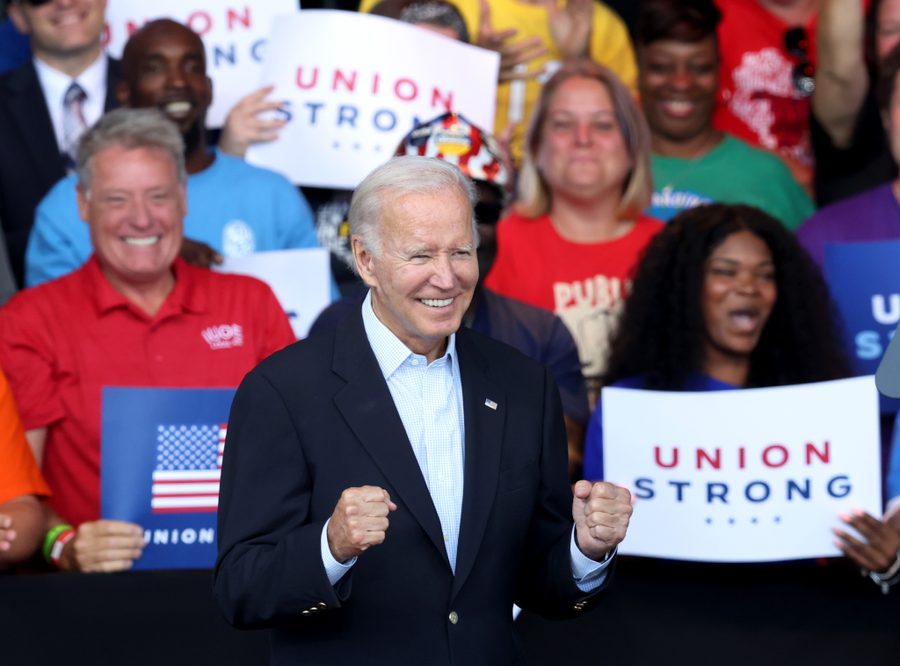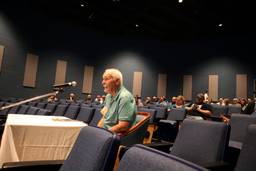The Good Years May Be Over, and Labor Didn't Get Much
The meager returns of Democratic control of the government remind us that true power comes from organizing workers.
Hamilton Nolan

On January 20, 2021, Joe Biden was inaugurated as president, and an invisible clock started ticking. That clock has been measuring the window of opportunity: The time during which Democrats held the White House and both branches of Congress. History told us that window would probably be closing with the 2022 midterm elections. When you think back over the past two years, they may feel, subjectively, like a time of great chaos — Covid, economic peril and great political struggles over democracy itself.
Wrong! The last two years were the good times. The Democrats did better than expected in the midterms, but they appear likely to lose the House (thanks to gerrymandering). That’s all it will take to shut down the chance at any progressive legislation for the next two years. For organized labor, the question worth asking now is: Did we take advantage of that opportune moment we had? The answer is no. And working people will suffer for that failure for many years to come.
Political party power ebbs and flows, but movements are permanent. The labor movement has the same job after the midterms that it had before the midterms: to increase the power of working people relative to the power of capital. In the long sweep of American history, the movement has not been doing this job very well. The political parties have swapped off control for the past half-century, but for virtually the entire time, union density has continued to decline, and economic inequality has widened. Individual victories notwithstanding, organized labor as an institution has been getting its ass kicked for generations now.
Since Ronald Reagan swaggered into office, the national political situation has been that Republicans try to wipe unions off the face of the earth, and the Democratic Party — in exchange for huge campaign contributions — agrees not to try to wipe unions off the face of the earth. (The Clinton and Obama administrations demonstrated the fact that this lack of outright hostility does not mean that Democrats would try to do anything substantive to actually advance the cause of unions, though.) Joe Biden’s election offered a respite from this depressing dynamic. Biden has been rightly called the most pro-union president of our lifetime. It’s a low bar, but one he meets. Jennifer Abruzzo, Biden’s choice to lead the NLRB, has pursued the most aggressive pro-union agenda that agency has ever seen. Though starved of resources and funding, the NLRB has been the one beacon that illustrates what a government that cared about labor could be.
Legislatively, the union establishment made the passage of the PRO Act, which would transform America’s broken labor laws, their top priority. This was a mistake. It was clear from day one that the PRO Act would never pass the 50-50 Senate unless we finally scrapped the filibuster. By lobbying for the law itself more voraciously than the structural change that is necessary to get the law passed, we got neither. Even in this administration, the one that unions cannot stop declaring is the best ever, organized labor has had to settle for a smattering of nice-but-not-amazing regulatory changes from the White House, rather than any meaningful legislation. In retrospect, unions would have been better served by training all their firepower for the past two years on abolishing the filibuster and fully funding the NLRB, the only real government firewall against the hellacious illegal union-busting that corporations routinely engage in.
The Democratic Party did in fact make an attempt to advance some transformative things in its big reconciliation package, once called Build Back Better, but those attempts crashed against the sullen wall of Joe Manchin. If the labor movement is being honest with itself, it will look back on 2021 and 2022 as a period of potential that was not taken advantage of. If Republicans take control of even a single house of Congress, all legislative hope will instantly die; everything becomes mired in performative recriminations. And the attitude of the Democrats toward the union world will begin to creep away from “What can we do for you?” back towards the old, familiar “What can you do for us, since your only other choice is doom?” There is plenty of promise on the state level for worker power — Illinois just enshrined collective bargaining in its state constitution, and Nebraska, for god’s sake, just passed a $15 minimum wage — but the climate for unions in Washington, D.C. is not going to be improving.
The fact that this meager collection of crumbs is all that the labor movement has been able to shake loose from Washington over the past two years is a stark reminder that political power will always follow from labor power, not vice versa. In the big picture, asking things like “How can we most effectively threaten or ingratiate ourselves to a capricious coal baron senator from West Virginia?” is really missing the point. Organized labor will grow more powerful by organizing workers. Unions become their own power centers, and politicians will then come calling. Not vice versa. This dynamic exists in specific places already (witness the parade of candidates who traipse into Culinary Union HQ in Las Vegas every election season), but it does not exist on a national scale. For all of the press releases the AFL-CIO has issued about how popular unions are in opinion polls, their budget for new organizing is a tiny sliver of their budget for political contributions. As long as we persist in this backwards dynamic, organized labor will continue to be a shrinking island in a sea of corporate domination, more concerned with protecting what it already has than with expanding its benefits to the 90% of workers who have no union to protect them.
Do not fall into despair when the midterms spawn two years of mind-numbing debt limit showdowns over border walls and House investigations into Hunter Biden’s love life. Do not make the mistake we made in the Obama years, settling for the wolves of neoliberalism out of fear that the dragons on the right were even worse. Go organize workers. Spend every last cent possible on organizing workers, before this moment of enthusiasm fades. Washington, D.C. is but one small speck in a vast nation of working people waiting impatiently to win a union. The labor movement’s future rests not on the outcome of the midterms, but on its willingness and ability to organize workers. That will be true for the next two years, even if the potential of the last two years was squandered. Good things happen when we organize workers, and bad things happen when we don’t.
Hamilton Nolan is a labor writer for In These Times. He has spent the past decade writing about labor and politics for Gawker, Splinter, The Guardian, and elsewhere. More of his work is on Substack.








